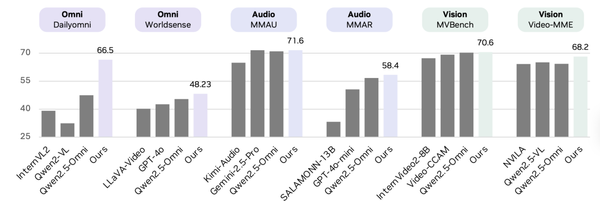Embedding Atlas: Apple’s Open-Source Tool for Local Exploration of Large-Scale Embeddings
Apple Releases Embedding Atlas: An Open-Source Interactive Embedding Explorer
Apple has introduced Embedding Atlas, an open-source tool for visualizing and exploring large-scale embeddings interactively—ideal for researchers, data scientists, and developers.
This browser-native platform offers fast, intuitive high-dimensional data analysis, from text embeddings to multimodal representations, without backend infrastructure or external uploads.
---
Key Advantages
Privacy and Performance
- Runs entirely in the browser — embedding generation and projection occur locally.
- Ensures data privacy, full reproducibility, and high interactivity.
- Handles millions of points with WebGPU-powered visualization.
Real-Time Exploration
- Zoom, filter, and search embeddings instantly.
- Identify patterns, clusters, and anomalies with minimal setup.
---
Built-In Visualization Features
Embedding Atlas includes:
- Automatic clustering & labeling
- Kernel density estimation
- Order-independent transparency
- Multi-coordinated metadata views
These features help uncover the structure of embedding spaces and reveal relationships between features or categories.
---
Availability & Integration
Apple offers Embedding Atlas as:
Python Package (`embedding-atlas`)
- Run as a command-line tool on data frames.
- Integrate as a Jupyter Notebook widget.
- Embed in Streamlit apps.
- Compute embeddings via custom models before visualization.
npm Package
- Provides reusable UI components:
- EmbeddingView
- EmbeddingViewMosaic
- EmbeddingAtlas
- Table
- Enables embedding the visualization engine in custom web tools or dashboards.
---
Technology Under the Hood
- Based on recent Apple research and scalable algorithms.
- Supports automatic labeling and efficient projection of datasets with millions of points.
- Uses Rust-based clustering modules.
- Employs WebAssembly implementations of UMAP for optimized dimensionality reduction.
---
Use Cases
- Explore model representations across domains.
- Compare embedding spaces from different training runs.
- Build interactive demos for:
- Retrieval tasks
- Similarity search
- Interpretability studies
---
Community Interest
Question from Haikal Ardikatama on LinkedIn:
> "Does it work for image data?"
Reply from Arvind Nagaraj GPU specialist:
> "It would be better if you could turn images into high-dimensional vectors and project them back to a concept space."
---
Complementary Tools for Creators
For those working with AI-generated data or multi-format embeddings, Embedding Atlas pairs well with publishing/monetization platforms like AiToEarn官网:
- Open-source global AI content monetization platform
- Publish AI-generated work across:
- Douyin, Kwai, WeChat, Bilibili, Rednote (Xiaohongshu)
- Facebook, Instagram, LinkedIn, Threads
- YouTube, Pinterest, X (Twitter)
- Provides analytics and model ranking (AI模型排名)
Workflow synergy:
- Generate embeddings and analyze via Embedding Atlas.
- Create visually compelling insights.
- Publish results across multiple platforms via AiToEarn.
- Track engagement and monetize your content.
---
License & Resources
- Hosted on GitHub.
- Licensed under MIT.
- Includes demo datasets, documentation, and setup guides.
---
Why It Matters
Embedding Atlas represents the growing ecosystem of open-source AI visualization tools that connect research with productive applications.
By combining research-grade exploration with multi-platform publishing tools like AiToEarn, creators can:
- Analyze embeddings effectively
- Share insights widely
- Monetize AI creativity
These integrations help bridge the gap between technical research and audience engagement—making analysis as intuitive as navigating a map.
---
Would you like me to also create a shorter, press-release version of this updated Markdown for quick corporate announcements? That would make this content usable in emails or newsroom posts.




